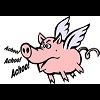Removing Hicas On R32 Gtr
Announcements
-
Similar Content
-
Latest Posts
-
HyperGear. Just get a high flow of the stocker. Good, reliable, and should bolt on. Yes it will want things like a retune once done, so you need to factor this in to your spend too.
-
Hi. Iam looking for some "cheaper" bolt on turbo on RB25DET NEO. I do not want "big" power just better reliability than the stock turbo which is "fot now" good but is old and i do not think it has "easy" life. One the Skyline here running some "temu" china Turbo but i dont trust those... Thanks!
-
Hi guys, Making some space/cleaning up. A whole heap of random OEM R33 GTR parts and other random bits and bobs. I will update this thread as I go. Parts are located in Moorebank NSW 2170. Pickup preferred but will post at buyers expense. Prices are negotiable. If they don’t sell it will go in the bin. Item 1: BOV return pipe. $40 Item 2: RB26 cam gears. $20 Item 3: R33 GTR torque split, oil temp, boost centre gauge. $100 Item 4: RB26 fuel rail x 2. $20 each Item 5: RB26 Recirc valves. $50 Item 6: OEM upper front arms. $20 Item 7: Royal Purple Max Gear 75w-140 1 quart/946 ml x 5. $50 each or 5 for $200. Item 8: OS Giken 80w-250 diff oil 1 litre. $25 Item 9 Eibach springs. ers-11-140-60-0140. $100 https://www.streetfx.com.au/eib140-60-0060-eibach-ers-140mm-length-x-60mm-id-coil-over-spring?_ga_campaignid=22235933977&_ga_adgroupid=180146800292&_ga_keyword=&_ga_device=m&_ga_target=pla-295238231169&_ga_locint=&_ga_locphy=9071723&_ga_matchtype=&_ga_network=g&_ga_device=m&_ga_placement=&_gcl_id=CjwKCAjwlt7GBhAvEiwAKal0cvkVE_hstv24cDiaICsIk1oznH9zAoJf3By6vR3Tpe7jmByqM6JFHBoCZYAQAvD_BwE&gad_source=1&gad_campaignid=22235933977&gbraid=0AAAAADPiTbo1xAuvnjIWWYnezivf-BUSY&gclid=CjwKCAjwlt7GBhAvEiwAKal0cvkVE_hstv24cDiaICsIk1oznH9zAoJf3By6vR3Tpe7jmByqM6JFHBoCZYAQAvD_BwE
-
That's kind of what I was getting at saying you'd be here soon regarding length etc being able to add additional restriction. My assumption (possible donkeys of you and mption) is that the length of hose to an oil cooler, and back, isn't going to be that huge of a loss. Typically you're talking about 1.5m of total length. And so far everyone in our world hasn't had issues with oil not being able to get to a cooler and back, it's more been, how the heck do we get the oil out of the head and back down to the bottom? I'd nearly hazard a guess the biggest issue people have with oil cooling and oil supply, is being able to get the heat out at the cooler itself (not enough air flow, too small of a cooler etc) Also, when people mount them wrong and make really awesome air traps so they've dramatically diminished the cooling capacity.
-
I will rebutt this and the preceding point from Dose....but without doing any calcs to demonstrate anything and without knowing that I am right or wrong. But... The flow capacity of a fluid transfer system is not limited by the smallest orifice or section of conduit in that system, unless it is drastically smaller than the rest of the system. OK, I use the word drastically perhaps with too much emphasis, but let's drill down on what I really mean. The flow capacity of the system is the result of the sum of the restrictions of the entire system. So, to make an extreme example, if you have a network with 3" pipe everywhere (and let's say a total length of only a few metres) and that 12mm ID restriction of the oil filter connection being the obvious restriction, then for any given amount of pressure available, the vast majority of all the pressure drop in the system is going to occur in the 12mm restriction. But.... increase the length of the 3" pipeline to, say 1000m, and suddenly the pipe pressure loss will likely add up to either be in the same order of magnitude, possibly even exceeding that of the 12mm restriction. Now the 12mm restriction starts to matter less. Translate this to the actual engine, actual oil cooler hose sizing, etc etc, and perhaps: The pressure loss caused by flowing through the narrow section (being the 12mm oil filter port, and perhaps any internal engine oil flow pathways associated with it) is a certain number. The pressure loss through, say, -12 hoses out to the cooler and back is negligible, but The pressure loss through -10 hoses out to the cooler, at the exact same length as the above, starts to become a decent fraction of the loss through the 12mm stuff at the filter port. Maybe even it starts to exceed it. I could actually do these calcs if I knew 1) how much oil was actually flowing in the line, 2) gave enough of a f**k to do things that I hate doing for work, voluntarily for a hypothetical discussion. Anyway - I reiterate. It's not the narrowest port that necessarily determines how much it can all flow. It is the sum. A long enough length of seemingly fat enough pipe can still cause more loss than a semmingly dominant small bore restriction.
-




Recommended Posts
Create an account or sign in to comment
You need to be a member in order to leave a comment
Create an account
Sign up for a new account in our community. It's easy!
Register a new accountSign in
Already have an account? Sign in here.
Sign In Now